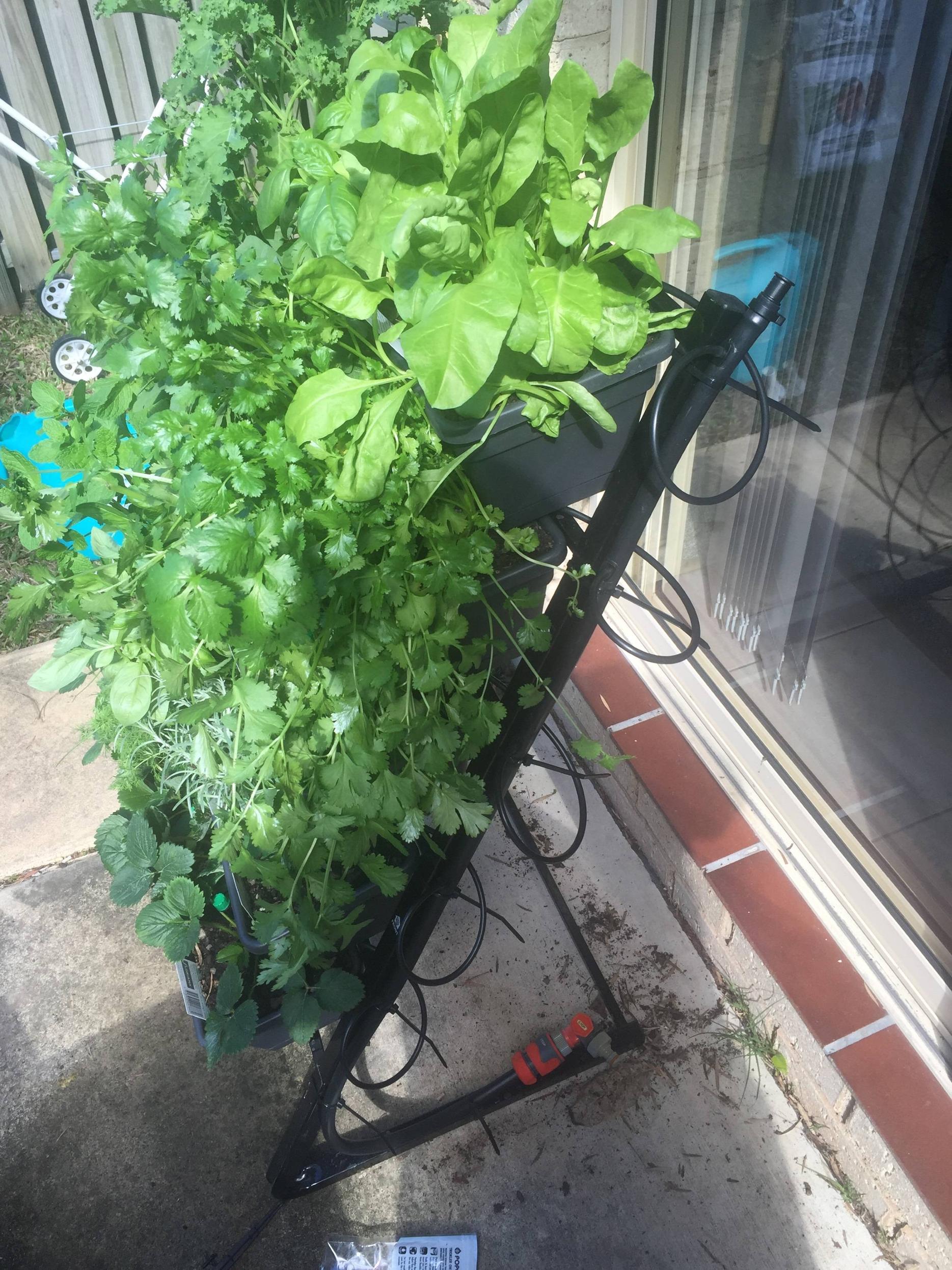Change the environment to create one much more suitable for growing these plants. It's a good thing you told me where the Oregano was in the third picture, because it's next to impossible to tell. I'm afraid this particular planting arrangement isn't going to work because all the plants are crammed much too close together, with no opportunity for air flow between them, and with growth flopping over on top of other plants. Added to that, you seem to be saying there are trays beneath the pots which trap water, and only when the trays are full does the water drain away, meaning there is always some water in the trays.
Most herbs like open, sunny situations with free draining soil; obviously, in pots, they need regular watering, but will not tolerate being left sitting in water, no matter how small an amount, over time. I'm sorry to say that the only time I've seen this sort of fungal problem has been when plants are cramped up together and there's too much water around, either from excessive rain over days or as in this case, cramped conditions causing poor or no airflow and insufficient drainage.
The only way to save your plant/s is to separate them, and in the case of oregano, potting up into something wider - this particular plant is a strong grower and wants to spread quite quickly, but all of your herbs really have insufficient room for growth. Left as they are, you will probably find the fungal problem spreads to most of them.
If you want to save the oregano and thyme (the ones already showing signs of fungal infection at soil level) take them out of their pots, strip away the infected parts, including at root level if its there too, repot into something bigger (with a drainage hole or three) and stand them, separately, in sun or partial sun if you're somewhere very hot, where they can have free airflow around them, keep them watered but not standing in water.
If you have room in the garden, oregano makes a good edging plant, but will need digging up and splitting yearly.



